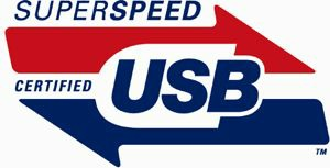Hardware Reference
In-Depth Information
The primary enhancements in USB 3.0 include the following:
• Dedicated IN and OUT lanes with four additional wires (plus ground) allowing full-duplex
operation (reading and writing at the same time).
• Increased power available for bus-powered devices, 900mA (4.5W) versus only 500mA
(2.5W) in USB 1.1/2.0.
• Aggressive power management; links go to low-power states when idle.
• The host schedules all transactions (no polling).
• Both hosts and devices transmit only when they have data.
For backward compatibility, USB 3.0 hubs also include a USB 2.0 hub, allowing operation in both
USB 3.0 and 1.1/2.0 modes at the same time. USB 3.0 also operates using switching, where
communication is done between the host and each device independently, rather than being broadcast
to all devices. This is far more efficient than the broadcasting technique used by USB 2.0 and prior.
Devices that pass USB 3.0 compliance testing may carry the SuperSpeed USB certified logo shown in
Figure 14.9. SuperSpeed certified USB logo.
USB 3.0 connectors and cables have an additional five pins dedicated to the SuperSpeed function
(two SuperSpeed differential signal pairs plus a ground), whereas the four existing USB 1.1/2.0 pins
remain for full backward compatibility. The socket has the new pins mounted just above and in front
of the existing pins. USB 3.0 sockets accept both USB 3.0 plugs and cables and USB 1.1/2.0 plugs
and cables.
Figure 14.10
shows the USB 3.0 socket design.



